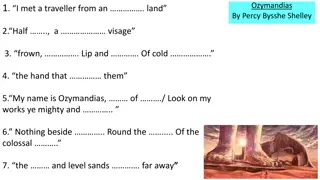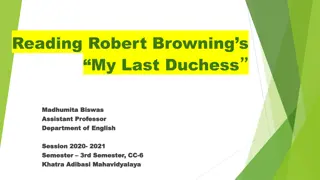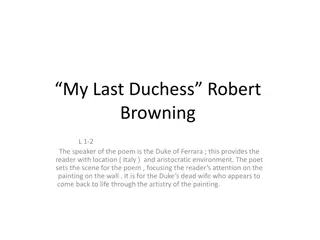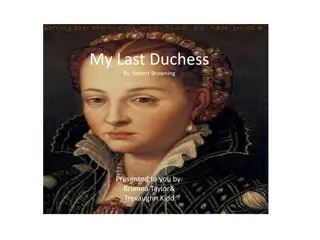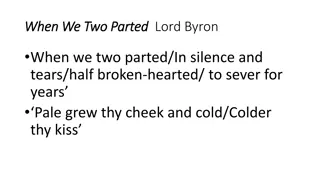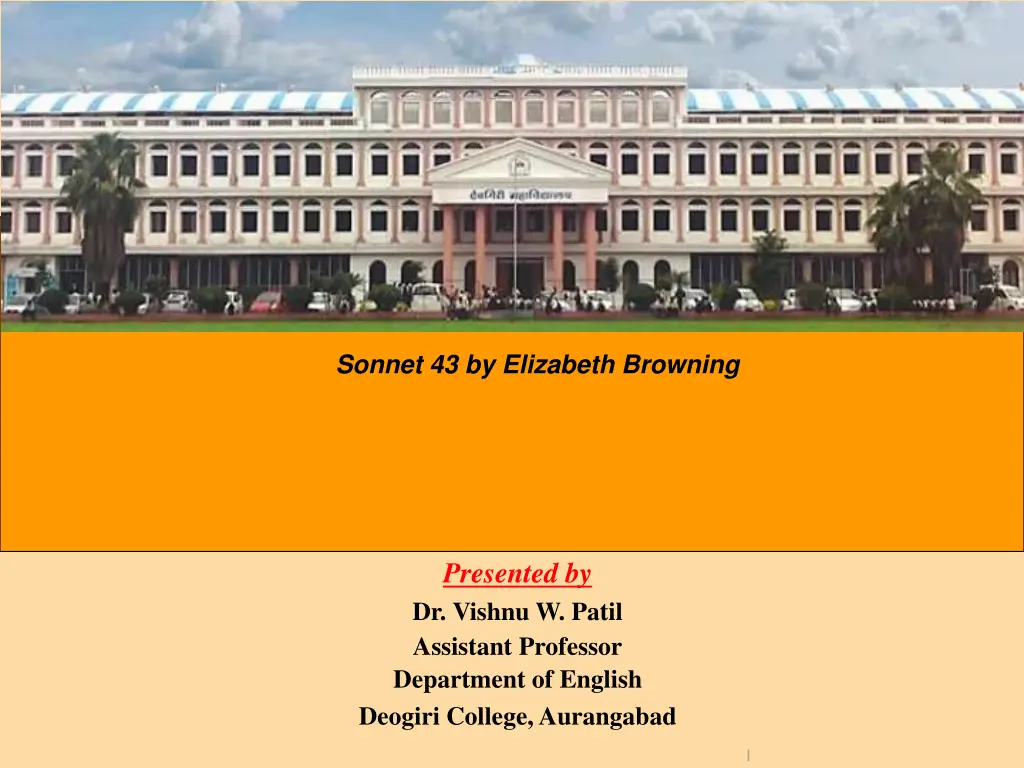
Elizabeth Barrett Browning: A Brief Introduction to Sonnet 43 and Her Poetry
Explore the life and works of Elizabeth Barrett Browning, an influential English poet of the Victorian era. Discover the significance of Sonnet 43 as a love poem within her collection. Learn about the history and structure of sonnets, including their themes and variations across different poets. Dive into the world of literary exploration with this insightful overview presented by Dr. Vishnu W. Patil, Assistant Professor of English at Deogiri College, Aurangabad.
Download Presentation

Please find below an Image/Link to download the presentation.
The content on the website is provided AS IS for your information and personal use only. It may not be sold, licensed, or shared on other websites without obtaining consent from the author. If you encounter any issues during the download, it is possible that the publisher has removed the file from their server.
You are allowed to download the files provided on this website for personal or commercial use, subject to the condition that they are used lawfully. All files are the property of their respective owners.
The content on the website is provided AS IS for your information and personal use only. It may not be sold, licensed, or shared on other websites without obtaining consent from the author.
E N D
Presentation Transcript
Sonnet 43 by Elizabeth Browning Presented by Dr. Vishnu W. Patil Assistant Professor Department of English Deogiri College, Aurangabad 1
Sonnet 43 by Elizabeth Browning 2
Elizabeth Barrett Browning (ne Moulton- Barrett, / bra n /; 6 March 1806 29 June 1861) was an English poet of the Victorian era, popular in Britain and the United States during her lifetime. Born in County Durham, the eldest of 12 children, Elizabeth Barrett wrote poetry from the age of eleven. Her mother's collection of her poems largest extant collections of juvenilia by any English writer. At 15 she became ill, suffering intense head and spinal pain for the rest of her life. Later in life she also developed lung problems, possibly tuberculosis. She took laudanum for the pain from an early age, which is likely to have contributed to her frail health. forms one of the 4
Sonnet 43 is a love poem in the form of a sonnet. A sonnet is a 14-line poem with a specifc rhyme scheme and meter (usually iambic pentameter). This poetry format which forces the poet to wrap his thoughts in a small, neat package originated in Sicily, Italy, in the 13th Century with the sonnetto (meaning little song), which could be read or accompaniment of a lute. sung to the 5
When English poets began writing poems in imitation of these Italian poems, they called them sonnets, a term coined from sonnetto. Frequently, the theme of a sonnet was love, or a theme related to love. However, the theme also sometimes centered on religion, politics, or other topics. Poets often wrote their sonnets as part of a series, with each sonnet a sequel to the previous one. For example, William Shakespeare (1564-1616) wrote a series of 154 sonnets on the theme of love. 6
Elizabeth Barrett Browning (1806-1861) wrote a series of 44 sonnets, in secret, about the intense love she felt for her husband-to-be, poet Robert Browning. She called this series Sonnets From the Portuguese, a title based on the pet name Robert gave her: "my little Portugee." Sonnet 43 was the next-to-last sonnet in this series. In composing her sonnets, she had two types of sonnet formats from which to choose: the Italian model popularized by Petrarch (1304-1374) and the English model popularized by Shakespeare (1564-1616). She chose Petrarch's model. 7



